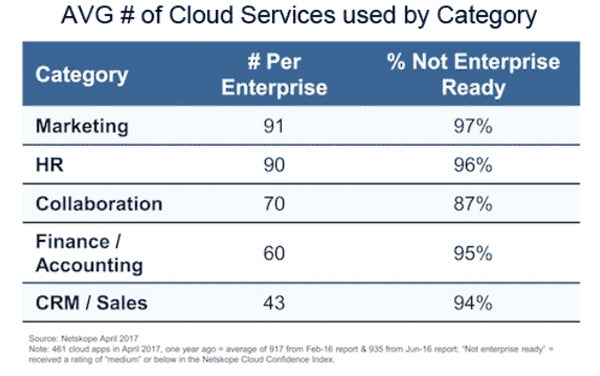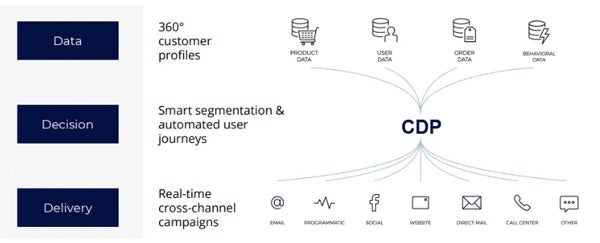“Data-Driven Thinking” is written by members of the media community and contains fresh ideas on the digital revolution in media.
Today’s column is written by Jordie van Rijn, an independent email and eCRM marketing consultant.
We’ve all heard the story about data silos, which are unconnected monsters filled with unused zombie data.
This scary tale is a marketing conference favorite. But it’s wrong. This narrative that silos are evil is outdated. Fragmented data actually emerges from becoming more data-driven.
“Silo” is just a metaphor, an especially hurtful one because it is leading marketers away from adding business value. Slaying silos shouldn’t be the goal in and of itself.
The seeds of fragmentation
Business systems such as CRM, marketing automation platforms, email service providers, ecommerce systems and customer support software are all made to help organizations market, sell and operate. And each system is becoming better at using data in smarter ways.
But the sheer number of systems used by organizations is staggering. The typical enterprise marketing department uses 91 cloud services, according to Netskope. Its definition was quite broad, including social channels and cloud storage, but in my experience, a marketing team can easily run 20 to 30 different mar tech systems at the same time.
Each system tackles a small or large task that contributes to the company’s overall marketing success. All of this is now possible because of the rise of cloud software-as-a-service, which makes it easier to add more delivery systems and channels. All the delivery systems hold pieces of data, but many systems are designed to work on select data sets.
So, delivery systems are not evil – they are doing what they are designed to do. They perform their tasks using their built-in data sets.
Divided responsibilities, divided data
Another reason that data silos naturally evolve is the nature of working in teams. Larger organizations, in particular, have teams that work in their own ways, with their own processes and therefore different types of software. They don’t have a goal of bringing together the data. Divided responsibilities lead to divided data.
So, teams are not evil – they work in ways that they believe are best for the team, but that might not be the best for the company as a whole, because thinking of what’s best for the company as a whole isn’t asked of them.
Strained data administrators
It is ironic that becoming more data-driven is the cause of fragmented data. Database administrators, often in the IT department, receive more requests to access and use the data generated, straining their resources and promoting a sense of sole ownership. This often leads to longer wait times, slowing the speed of campaign deployment.
I am not so cynical to say data administrators are selfish or overly protective of their resources. But because one department becomes dependent on the other, IT forms a bottleneck. So organizations need to find a way to improve accessibility while reducing the strain on IT.
The customer data platform
The customer data platform (CDP) has been gaining a lot of popularity. There are several species of CDP, depending on features and depth of functionality. They all similarly work through three layers – data, decisioning and delivery – which is how they promise to solve the fragmentation caused by data silos.
Source: The CDP’s three layers CrossEngage
CDPs collect, analyze and apply user or customer data to marketing efforts. Data can include user, product, order or behavioral data. Bringing together the data stuck in silos can connect the profile and activities of individual customers or prospects across devices and channels.
CDPs can provide insight to marketers about the timing, business intelligence and logic needed to deliver great campaigns. This may include doing event-triggered campaigns, even in real time, and predictive analytics that draw on artificial intelligence.
Since CDPs connect with delivery platforms, including email marketing, SMS and programmatic direct, they allow campaigns across multiple channels. Companies can mimic ongoing conversations with customers based on purpose, context and an understanding of previous and potential future interactions.
Marketers can typically access and manage CDP interfaces without the need for IT. There are still IT resources involved and probably always will be, but they lessen the strain on IT departments for day-to-day marketing activities and make data accessible to marketers.
The focus on data silos should shift to data accessibility
Fragmented data originates from the way in which organizations are structured and mar tech is implemented.
We have to think differently about this, because slaying silos shouldn’t be the goal. Instead, let’s aim for what I like to call data accessibility by design. We can use technology to put the focus on accessibility. This comes with changes to responsibilities, goals and, especially, attitudes.
Only then can companies unchain their data and unlock its value. That would be the biggest data revolution of the last 10 years.
Follow AdExchanger (@adexchanger) on Twitter.















